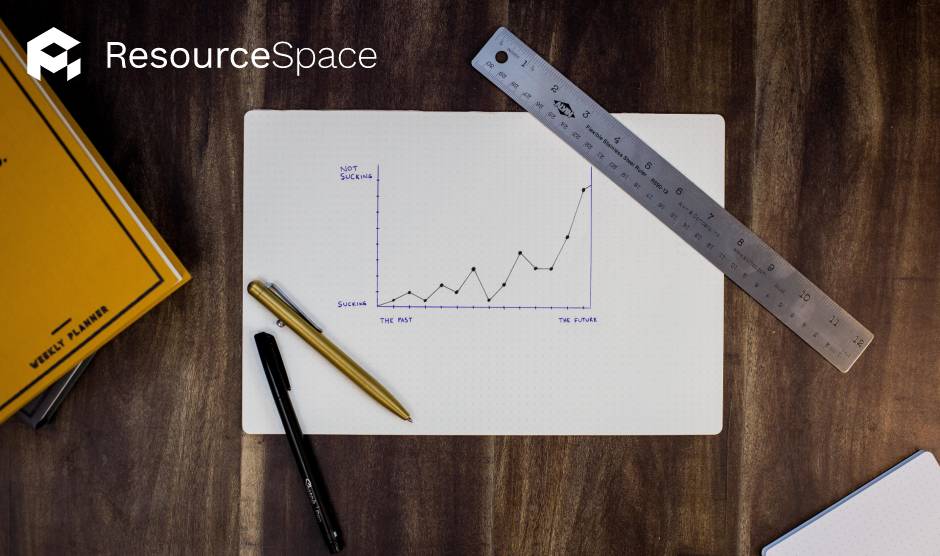
Fairtrade communications staff around the world really appreciate ResourceSpace. It's proven invaluable as a one-stop for sharing and storing all our images and brand assets. I don't know how we'd manage without it!
Blog
7th December 2021

An increasing number of organisations from all sectors are starting to understand the importance of Digital Asset Management, and this is reflected in the huge growth expected in the market over the next few years.
In 2020, the DAM market was valued at $3.88billion. By 2025, that figure is expected to hit $6billion.
So, what's driving this demand, and why is Digital Asset Management more important than ever before?
So what is Digital Asset Management (DAM) anyway?
A Digital Asset Management (DAM) platform stores and organises all of an organisation's digital assets, including photos, videos, audio files and documents.
Far more advanced than file storage solutions like Google Drive or Dropbox, DAM systems make categorising, finding and sharing digital assets simple, while allowing you to manage it all from one central location.
The majority of organisations now use cloud-based DAMs, but on-premise solutions are also available if required.
Typically, a DAM will be managed by a digital asset manager or brand manager, but the system can be made available to anyone in the organisation who needs access to digital assets. What's more, the level of access granted to each group of users can be managed to ensure only the people with the right permissions can download, edit or upload files to the DAM.
Some examples of typical DAM users include:
Digital Asset Management features could offer a number of benefits to your business.
Your DAM system will act as the central location for all of your digital assets - a 'single source of truth'.
An intuitive hierarchy makes it easy to see where everything should go. You'll no longer waste time trying to figure out whether that image you need is stored in the company Dropbox, on Jackie's computer in the HR department or attached to an email you may or may not have received a few weeks ago.
DAM systems use metadata to help make finding single assets or groups of assets quick and easy.
Unlike Google Drive where you need to know the file name (or at least know some of the words used in the file name), digital assets within a DAM can have multiple tags. Let's consider an example:
Your organisation uses Google Drive for file storage, and you need to find the headshot of the company's CEO for use in an internal newsletter.
There's no set naming convention in place, and there's a lot of possible file names you'd need to search for in order to find it.
You ask HR if they have it, but they're not sure whether or not they've got the latest version. Trying to locate just one image delays the whole newsletter and you miss your deadline.
If you were using a DAM, the headshot would have multiple metadata tags. You still might not be sure of the file name, but the image might be tagged with their name, 'profile', 'CEO', 'headshot', or something similar. It'll be the digital asset manager's job to make sure metadata is used correctly, but AI tagging can even suggest metadata based on what's in the image.
What's more, permissions will be restricted to ensure only the most up-to-date profile picture is used - something that can't be done easily in a platform like Google Drive.
Organisations that don't use a DAM tend to share a lot of assets via email, or by granting blanket permissions to whole folders or drives in order for that person to access just one asset. Other people might use a solution like WeTransfer for sharing assets.
This inconsistency makes it impossible to know exactly who has access to what.
A DAM gives the digital asset manager the power to restrict access permissions - right down to individual files if necessary - and monitor who is accessing different assets. You can even generate secure URLs for sharing with external stakeholders without having to download the asset to your local machine.
With ResourceSpace you can configure filters for different users so the assets they own are kept private. This allows you to create custom environments for collections that are separate from the main DAM and that have their own restricted access.
One of the biggest challenges for organisations that don't have a 'single source of truth' for digital assets is maintaining brand consistency. You've probably experienced this problem in the past - being unsure if you're using the proper logo in marketing collateral or if you've got the highest resolution images for the website.
A DAM solution makes sure only the latest brand assets are accessible, so each department is always using the correct images.
A lot of your digital assets might be subject to various copyright restrictions, and keeping track of these licenses isn't just tricky, but also really important.
A DAM like ResourceSpace can link licenses with each asset they relate to, and automatically restrict use of an asset once a set date is reached. This makes it much harder to accidentally use assets that you no longer have permission to use, or include them in media you don't have the rights for.
An organisation's best work is done when teams are able to collaborate easily, and a DAM solution makes sharing and distributing assets among colleagues simple.
Assets can be shared securely with internal and external stakeholders and you can even create public facing collections.
You can also empower content creators to upload directly to the platform, with workflows in place to ensure you still have control over final approval of new assets.
With a DAM you can view performance metrics of specific assets, including how frequently they've been searched for, downloaded, edited and more. This data allows you to get a clear picture of how the system is being used, what assets are most valuable or redundant, and identify any common searches that don't yield any results.
Want to find out more about why Digital Asset Management is important, and how it can transform your organisation's file storage and management? Check out our free whitepaper, 'Why DAM is more than file storage'.
You can also take a look at our free DAM software comparison to gain insight on which one would be right for you, or take a look at the digital asset management functional requirements here.
Alternatively, if you're ready to try out a comprehensive DAM system risk-free, launch your free ResourceSpace instance in seconds by clicking below.